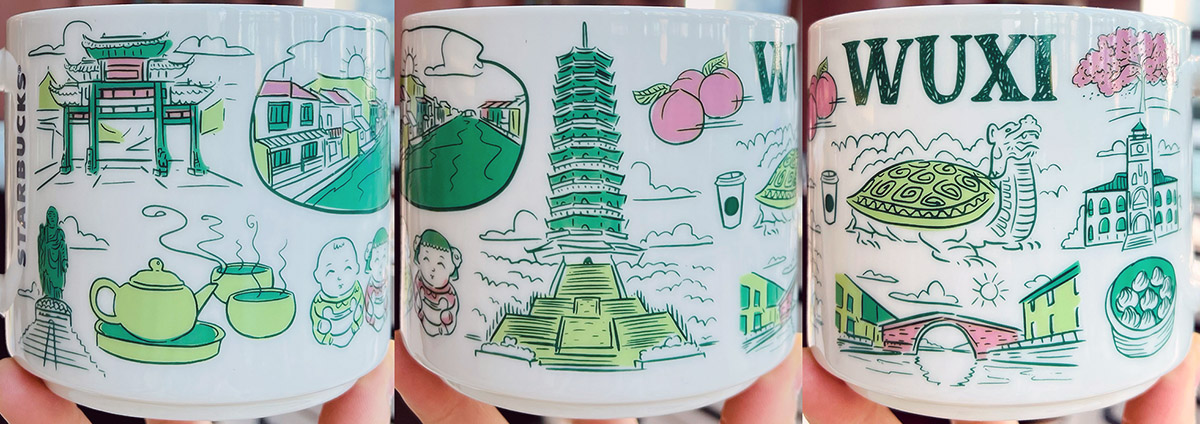
Been There – Wuxi
Starbucks Been There – Wuxi is a mug for a city located in Jiangsu Province. Wuxi is one of China’s oldest cities, with a history dating back over 3,000 years. It was once a vital center for the Wu Kingdom during the Spring and Autumn Period. Known for its early prosperity in rice cultivation and silk production, Wuxi grew into a major commercial hub by the Ming and Qing dynasties. Its name, meaning “without tin,” reflects the depletion of local tin mines that once drove its early economy. Today, Wuxi’s historical roots are still visible in its ancient canals, temples, and preserved districts.
Some of the landmarks from the design of Wuxi mug:
– Taihu Yuantouzhu, or Turtle Head Isle, is a scenic spot on Lake Taihu known for its natural beauty and historic gardens. It became a favorite retreat for scholars and poets during the Tang and Song dynasties. Today, it’s especially famous for its cherry blossoms and sweeping views of the lake.
– The Dragon Turtle statue near Taihu Lake symbolizes strength, longevity, and wisdom in Chinese culture. It draws from mythological traditions where turtles and dragons are revered as cosmic creatures. In Wuxi, it serves both as a tourist attraction and a reminder of enduring cultural beliefs.
– Nanchan Temple dates back to the Southern Dynasties (420–589 AD) and remains one of the oldest Buddhist temples in Wuxi. It has been rebuilt and restored many times, yet retains its traditional layout and spirit. The temple area is now a lively mix of worship, shopping, and cultural events.
– Built during the early 20th century, Liyuan Garden was designed by a Qing Dynasty official and named after his wife, Li. It blends Jiangnan-style landscaping with winding paths, rockeries, and lotus ponds. The garden’s connection to both personal history and classical design makes it a peaceful symbol of Wuxi’s past.
– The Qingming Bridge, built during the Ming Dynasty, spans the Grand Canal and once served as a crucial link for trade and daily life. Its stone arches and old buildings nearby preserve the feel of Wuxi’s ancient river culture.
– Miaoguang Pagoda, originally constructed in the Liang Dynasty, stands as a testament to Wuxi’s early embrace of Buddhism. Though damaged and rebuilt several times, the pagoda maintains its iconic layered silhouette. It offers visitors a rare glimpse into ancient architectural techniques and religious devotion.
– The Lingshan Grand Buddha is one of China’s largest bronze Buddha statues, standing 88 meters tall. Completed in 1996, it symbolizes peace and spiritual strength in a modern setting. Surrounding the statue are intricate temples and cultural sites that reflect traditional Buddhist art and architecture.






































































